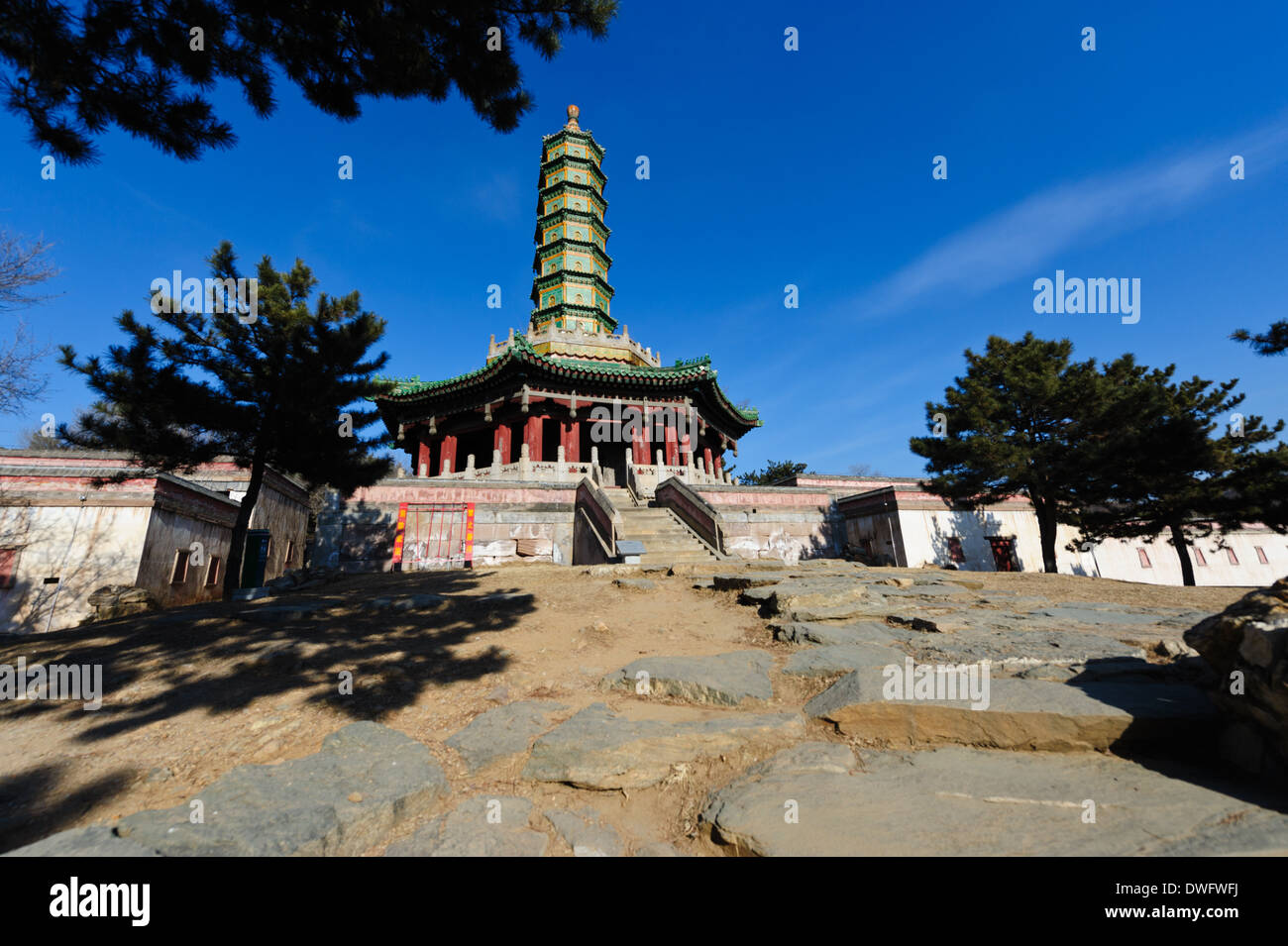The Wanshou pagoda, part of the Xumi Fushou Temple;. Hebei Province, Chengde , China.

Image details
Contributor:
Bert de Ruiter / Alamy Stock PhotoImage ID:
DWFWFJFile size:
34.5 MB (1.2 MB Compressed download)Releases:
Model - no | Property - noDo I need a release?Dimensions:
4256 x 2832 px | 36 x 24 cm | 14.2 x 9.4 inches | 300dpiDate taken:
22 December 2013Location:
Asia Peoples Republic of China Hebei Province Chengde Xumi Fushou TempleMore information:
From Wikipedia, the free encyclopedia: The Xumi Fushou Temple; literally: "Temple of Happiness and Longevity of the Sumeru Mountain" is one of the Eight Outer Temples in Chengde in the Chinese province of Hebei. The Buddhist temple is located in the north of the park complex of the Chengde Mountain Resort to the east of Putuo Zongcheng Temple on the north side of a slightly upward slope hill. The temple covers an area of 37, 900 square metres (408, 000 sq ft). History The temple was first designed in 1780 to celebrate the 70th Birthday of Emperor Qianlong and built for Penchen Lama the VI who came to Chengde from Tibet to convey his congratulations, and is a fusion of Chinese and Tibetan architectural style. Its main building, the Great Red Terrace , has three storeys and was built above three-storeys foundation. The Miaogaozhuangyan Hall where the Penchen Lama preached is the center of the temple. The Jixiangfaxi Hall with a roof made of gold plated copper tiles was the home of Penchen Lama. Other buildings are the seven-story octagonal Liuli-Wanshou pagoda "Glazed Tile Pagoda of Longevity" and a glazed tile paifang . In the stele pavilion of the temple is a four-language memorial plaque with stone engraving in Manchu, Chinese, Mongolian and Tibetan script, with an inscription in memory of the events.